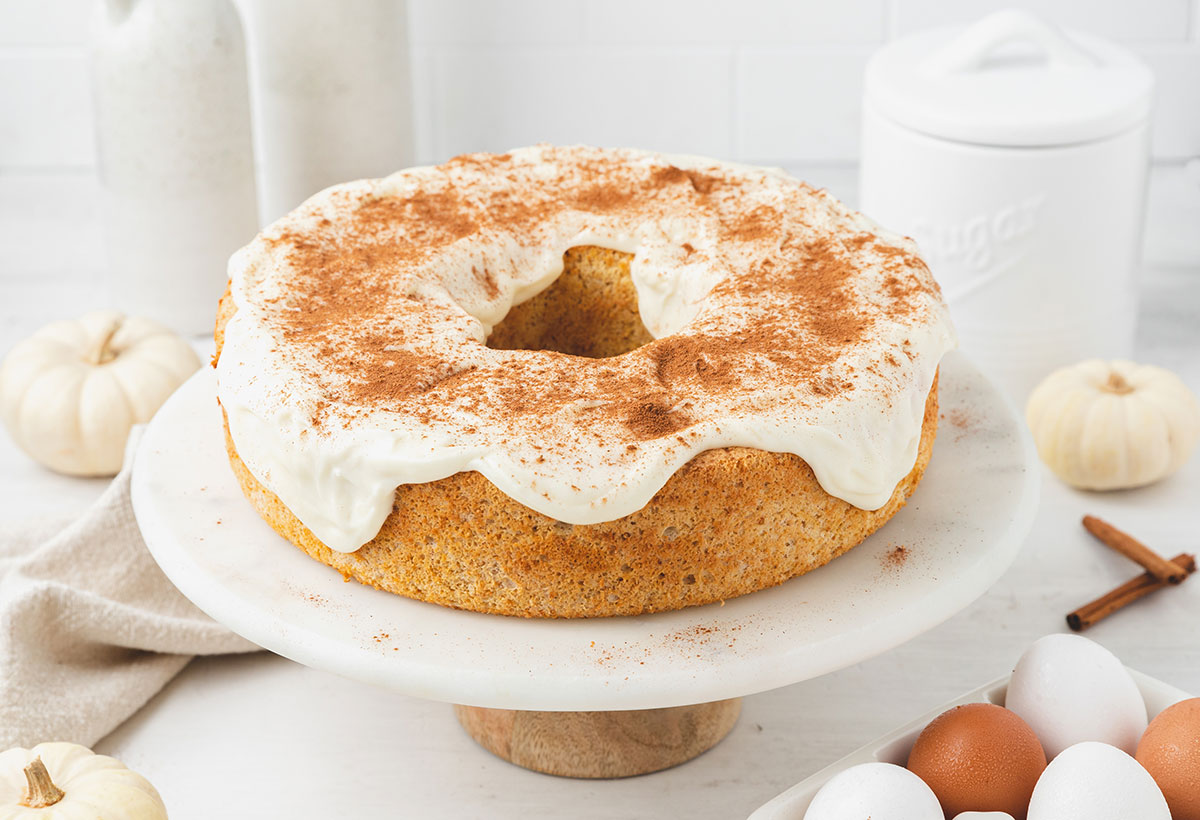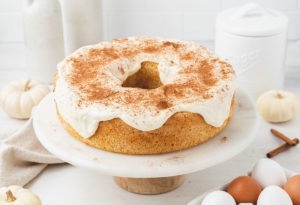Ingredients and Directions
- Pumpkin Angel Food Cake
Directions
Preheat oven to 350˚.
In a medium bowl, sift together the cake flour, powdered sugar, pumpkin pie spice, and salt and set aside.
In the bowl of a stand mixer fitted with a whisk attachment, whip the egg whites and cream of tartar on medium speed for 2 minutes until frothy. Gradually add in the sugar and continue to whip on medium speed until soft peaks form. Add in the vanilla, then turn the mixer up to high and continue to whip until stiff peaks form. The meringue should be smooth and glossy.
Add the flour mixture to the meringue and fold gently until just combined.
Place the pumpkin in a medium bowl and add about 1/4th of the batter to the pumpkin. Fold gently until the pumpkin is incorporated into the batter. Then add the pumpkin mixture to the rest of the batter and mix until combined. This step is important to help keep the pumpkin from deflating the meringue.
Gently spoon the batter into an ungreased angel food cake pan and bake at 350˚ F for 30-40 minutes or until the top is golden brown and the cake is cooked through.
Invert the cake pan onto a cooling rack and let cool upside down for 1-2 hours, until the cake has fully cooled. Once cool, run a sharp knife gently around the edges of the pan to loosen it and then invert onto a cake plate.
Ingredients
- 1 1/4 cup cake flour
- 1/2 cup powdered sugar
- 2 tsp. pumpkin pie spice
- 1/4 tsp. salt
- 12 large egg whites, room temperature
- 1 1/4 tsp. cream of tartar
- 1 1/4 cup granulated sugar
- 1/2 tsp. vanilla extract
- 1/2 cup pumpkin puree
- Cream Cheese Glaze
Directions
Whisk together the cream cheese, powdered sugar, heavy cream, and vanilla until light and fluffy.
Smooth over the top of the cake and sprinkle with extra pumpkin spice if desired.
Store the frosted cake in the fridge for up to 3 days.
Ingredients
- 4 oz cream cheese, room temperature
- 1/2 cup powdered sugar
- 2 tsp. heavy cream
- 1/2 tsp. vanilla extract
To ensure food safety, eggs should be cooked until both the yolk and the white are firm. Consuming raw or undercooked eggs may increase your risk of foodborne illness, especially for those with certain medical conditions. For recipes that call for eggs that are raw or undercooked when the dish is served, use either pasteurized shell eggs that have been treated to destroy Salmonella, or use pasteurized egg products.






